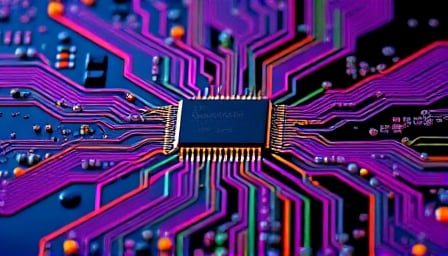ARM Holdings PLC: A Strategic Pivot Toward Next‑Generation Silicon and Global Expansion
ARM Holdings PLC, the world‑leading designer of low‑power semiconductor technology, has continued to assert its position as a pivotal player in the rapidly evolving AI and edge‑computing landscape. The company’s latest developments—ranging from a high‑profile strategy shift resembling Nvidia’s approach, to a bold expansion into India’s Bengaluru chip‑design hub—signal a decisive move toward larger, more integrated ecosystems.
Nvidia‑Like Strategy Emerges
On September 17, 2025, analysts noted that ARM’s recent trajectory mirrors that of Nvidia, particularly in its pursuit of a “platform‑centric” model that integrates GPU, CPU, and specialized accelerators into a unified architecture. While Nvidia has historically dominated the discrete GPU market, ARM’s new strategy focuses on embedding its advanced 2 nanometer (nm) process nodes within the broader AI server and data‑center portfolio. This pivot is expected to unlock higher performance per watt, a critical metric as demand for AI‑driven workloads continues to surge.
The shift is further underscored by the price‑earnings ratio of 184.48, which, despite appearing elevated, reflects investor expectations of substantial revenue growth tied to the next generation of ARM‑based chips. The company’s market cap of $162.5 billion confirms its status as a heavyweight in the information‑technology sector, while its Nasdaq listing ensures liquidity for global investors.
Bengaluru Unit: The 2 nm Frontier
In a separate but complementary development, Union Minister Ashwini Vaishnaw announced on September 16, 2025, that ARM’s new Bengaluru facility will spearhead the design of 2 nm chips. This move not only cements India’s position as a global semiconductor hub but also provides ARM with a strategic foothold in one of the world’s fastest‑growing technology markets. The 2 nm node is expected to deliver significant gains in transistor density and power efficiency, directly benefiting ARM’s portfolio of CPUs, GPU accelerators, and network‑on‑chip solutions.
The Bengaluru expansion is part of ARM’s broader strategy to diversify its supply chain and reduce dependence on a single geographic region. By cultivating a local ecosystem of design engineers, fabrication partners, and talent, ARM positions itself to accelerate time‑to‑market for its next‑generation silicon, while also capitalizing on India’s favorable fiscal incentives for high‑tech manufacturing.
Market Reactions and Competitive Dynamics
ARM’s strategic announcements have already influenced market sentiment. Following Nvidia’s partnership with Intel—announced September 18, 2025, with a $5 billion investment and a co‑design agreement—ARM shares dipped 4.5 % in early trading on the Stockholm market, as reported by Avanza.se. Investors perceive the Nvidia‑Intel alliance as a potential threat to ARM’s existing CPU partnership, prompting a reevaluation of ARM’s competitive advantages.
Nevertheless, ARM’s deep-rooted relationships with global OEMs, coupled with its licensing model that allows customers to customize silicon, provide resilience against such alliances. The company’s ability to monetize its IP through licensing and design‑services revenue streams remains a core pillar of its business model.
Outlook: Toward Integrated AI and Edge Ecosystems
ARM’s trajectory points toward a future where its silicon becomes the backbone of AI servers, autonomous vehicles, and high‑performance mobile devices. The combination of advanced process nodes (2 nm) and an ecosystem‑centric strategy positions ARM to compete directly with Nvidia’s integrated GPU solutions while maintaining its leadership in energy‑efficient design.
Investors should monitor several key indicators moving forward:
- Chip‑design milestones in Bengaluru and the pace of 2 nm production readiness.
- Revenue diversification from licensing versus design‑service fees.
- Strategic partnerships with data‑center operators and automotive OEMs that could lock in long‑term contracts.
- Regulatory developments in India and the United States that may affect semiconductor supply chains.
In sum, ARM Holdings PLC is not merely a passive supplier of silicon; it is actively reshaping the semiconductor value chain through strategic geographic expansion and a bold reimagining of its product portfolio. The company’s next few quarters will be decisive in determining whether this vision translates into sustained market dominance and shareholder value.
